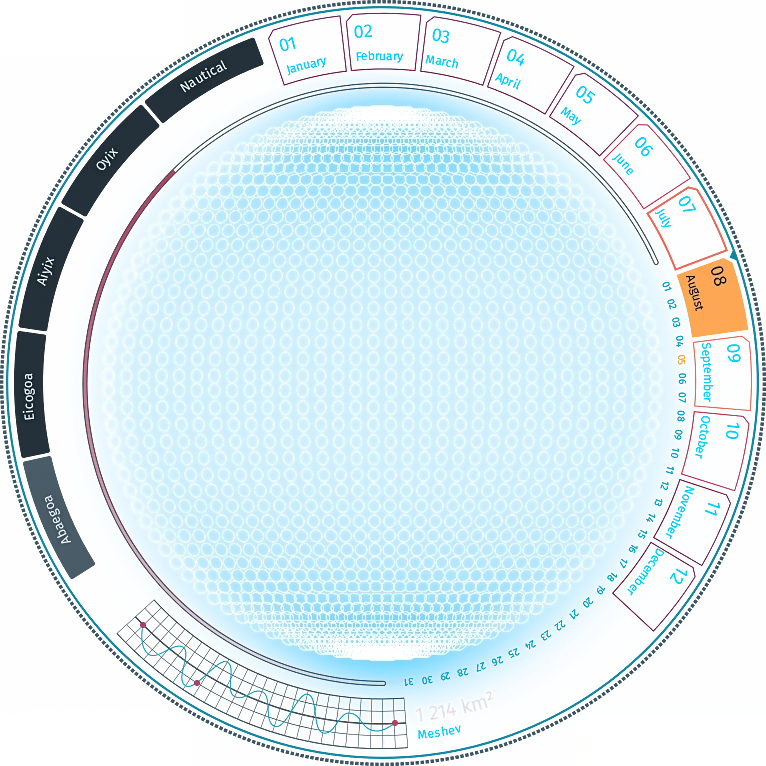Kjersia (kjɚrʒə)
Ecosystem
The taiga of Kjersia has a harsh climate in the winter, with temperatures as low as -30°C, and cool summers, with temperatures as high as 20°C. Summers are mild and long enough for the earth to thaw, but the soils are deficient in nutrients. The yearly precipitation ranges from 40 cm to 100 cm, with snow being the most common form of precipitation. Because of the frigid temperatures, there is little evaporation.
Evergreens dominate, partly due to the short summer season in this biome. These plants begin photosynthesis as soon as the temperature rises in the spring, taking advantage of the weak northern sun. The needles of conifers are excellent at capturing light, which is why the soil is dark and inhospitable to the development of undergrowth. Additionally, because dead needles acidify the soil and fill it with resinous chemicals, they inhibit herbs and shrubs from germinating. Shrubs containing fleshy fruits, such as currants, raspberries, and blueberries, can only grow where the sun can penetrate. The needle-like leaves of conifers can withstand the cold, however. The taiga gives way to sedges, rushes, and graminaceous plants in some locations. Mosses and liverworts, as well as sphagnum or peat mosses, are found in the moistest places and are responsible for the creation of peatbogs.
Foxes, lynxes, bears, minks, and squirrels live in the taiga, and grey wolves and their prey- deer, Mosibou, and moose- are some of the larger mammals. Wolves hunt these herbivores in packs during the winter. Most of these creatures spend the severe winter months in the forest, where they are protected by the foliage. Non-hibernating creatures have adapted to move swiftly on snow. During the winter, the majority of the birds that live in the taiga migrate south. Ants, wood wasps, xylophagous beetles, and flies are also common. Moth larvae are particularly damaging to some trees.
Fauna & Flora
Predators like lynx and timberwolves and members of the weasel family; small herbivorous mammals like snowshoe rabbits; moose and other large herbivores like Mosibou; beavers; songbirds and migratory birds
Needleleaf coniferous trees such as spruce and fir; some broadleaf deciduous trees; small, berry-bearing shrubs
Natural Resources
- There are numerous oil and natural gas fields in the taiga. Coal, oil, methane, iron, silver, gold, diamonds, and a variety of ores are all abundant in Kjersia.
- Soil that is rich in humus is ideal for farming.
- Forests are often used for economic purposes, such as the production of lumber and cellulose pulp.
- Birches yield a very strong and light cellulose, which is used to make paper, and they are light and easy to work with.



Comments